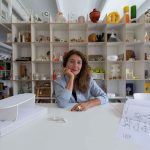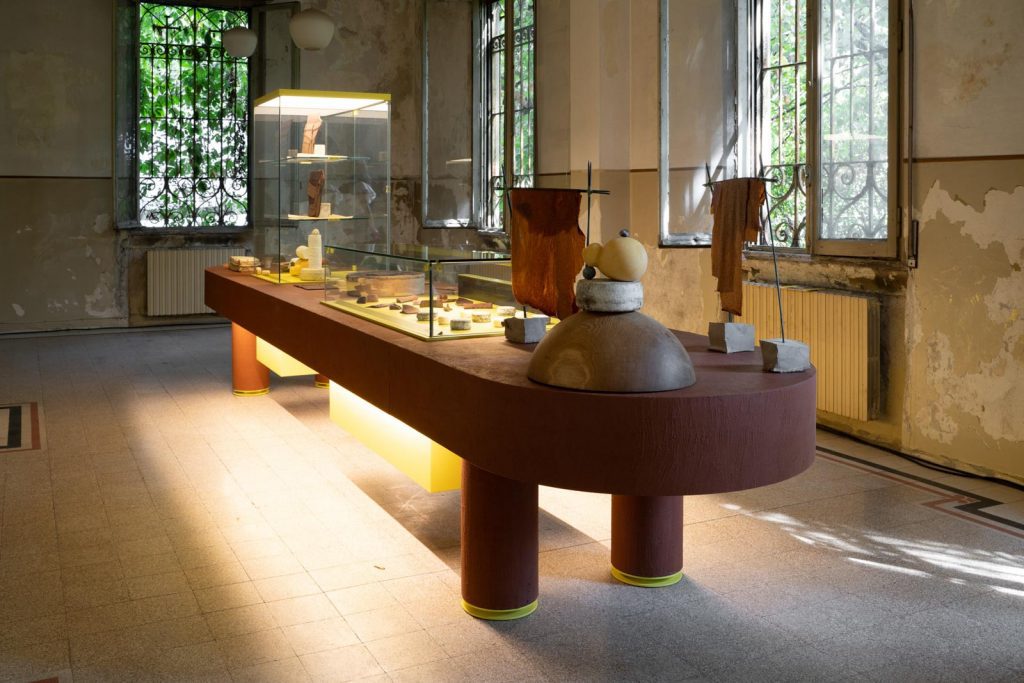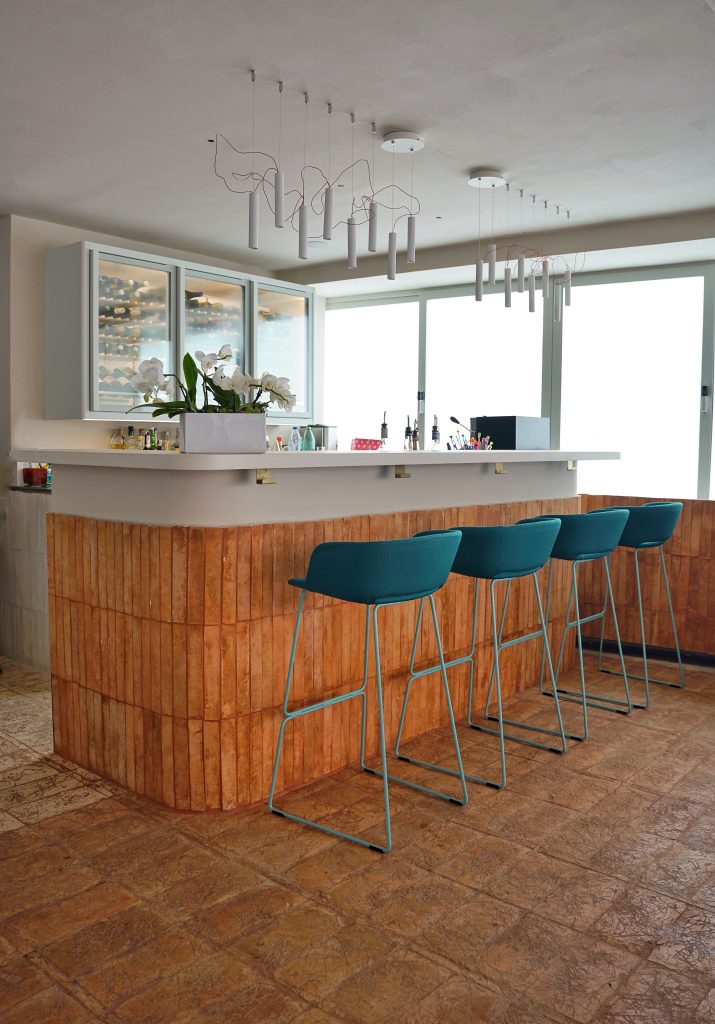Material minimalism that looks to the future

Product design, art direction and interior design: these are the areas in which Studio Irvine, directed by architect Marialaura Irvine, operates.
A studio whose more than 30-year history and tradition are such as to place it in the Olympus of contemporary design. Brands such as Arper, Baleri Italia, Discipline, Matteo Brioni, Muji, MPlus, Phaidon, Thonet, and many others have chosen it for the meticulous research it puts into the material and for the sartorial and strategic care of its projects. In addition to the numerous collaborations through which she expresses her vision of creativity-which is not art-, interior design, and product design-radical in their responsibility and simplicity- Marialaura Irvine is a professional who works with the Genius Loci, with tradition, historical roots, and the material for which she has an almost devoted respect. And it is precisely through the material that the meeting with Ciam took place. The occasion was Table, the product designed by Fabrizio Milesi and presented coated with the earths of Matteo Brioni for the first time in Milan during Fuorisalone 21, and now selected to compete during 2024 for the XXVIII Compasso d’Oro. A meeting, the one between Studio Irvine and Ciam, from which the collaboration for the D’amore restaurant project, in Capri, was also born.
Marialaura, first of all welcome to I AM Blog, an editorial space where we often talk about pastry, desserts, food and wine in general, but also design, so I hope you feel comfortable…
Architects and designers also work with materials and get their hands dirty-we are like chefs meticulously creating a dish based on the ingredients they have carefully and respectfully chosen, the only difference is that we deal with other kinds of materials. So yes, I feel very comfortable.
What connects Studio Irvine’s philosophy to that of a brand like Ciam?
Personally, I consider every project a challenge in trying to create innovation, and Ciam in this is a good guarantee ally. I think what binds us together is just the sense of challenge, the same thought and point of research that push us to go further, toward the conception and realization of unique and often sartorial projects. I like Ciam because its sophisticated technology is taken for granted, you can work and hide it with the materials that best suit the project: the innovation, the experience that are in it make it almost impossible to worry about that aspect. Our encounter happened indirectly: the go-between was Matteo Brioni, a brand for which I have been curating the art direction for ten years. His earths, his clays, the result of meticulous research on our territory, are chosen by the most important architects in the world for their natural three-dimensionality and sustainability, a value that is almost taken for granted, a bit like what happens with Ciam technology. In this case, Fabrizio Milesi chose Brioni’s earths as the finish for a truly unique product such as Table, and the result that was shown to us at Alcova I think was just that of a challenge met. From that moment, I began to notice that Ciam was present in the restaurants, in the cafes, in the most beautiful places I entered, so I had no doubts when it came to involving it among the technological partners of the renovation project of the D’Amore restaurant in Capri.

Another project with natural materials at the center…
Underlying the renovation of the D’Amore restaurant was the work on the Genius Loci, the choice of materials and elements belonging to the very reality of the place. I was inspired by Capri, its nature, its colors, its materials, the terracotta streets, the pine needles that fall copiously to the ground. Hence, for example, the idea of using terracotta for the pavements and that of creating a natural link with the pines through a grammar of signs that goes to define, in what is to all intents and purposes a personalized pavement, a language common to the space and the natural element that surrounds it. As for Ciam’s pure technology, its supply involved the Bakery and includes the show cooking counter, covered with clay and equipped with a worktop in Lapitec Bianco Crema Vesuvio; the back counter is composed of an Exclusive 74P wall unit for wines with custom dimensions and finishes made in RAL 9002 Grey White. The bar counter includes two ambient Compact basements with visible brushed steel sheets, while the checkout counter is composed of two ambient elements equipped with a Lapitec Bianco Crema Vesuvio top. A material, the latter, which is also natural, as it is a recomposite of minerals, and widely used for cooktops and bars due to its durability. In short, the concept behind this work was precisely to open up to the place through its materials. The uniqueness of this study allowed us to tell the story of the DNA of the restaurant itself, which works in the kitchen on a kilometer zero basis, just as kilometer zero was the basis of our research on materials.

Earlier we mentioned Alcova, one of the revelation spaces of the last two editions of Fuorisalone: do you think this still plays a crucial role in offering new horizons to design?
Milan is atypical and unique in this choice to be at the fair and simultaneously offer an “outside” program that can involve the whole city. Certainly, its conformation in concentric rings, the fact that it is small and most of the showrooms are in the center make it special and easy to visit. Other cities have tried, but the charm with which Milan manages to open wonderful and exclusive spaces to the public, as well as off the usual tours such as Alcova, I think is unique and gives added value to the event. This is another reason why Fuorisalone works and will always work. It is an unmissable experience, and if people queue up to enter the ateliers and the various places dedicated to design, it is yes to learn about its novelties and discover its spaces, but also because those moments are accompanied by experiences of exchange and encounter. During design week, Milan turns into a magical place and magical things can happen. I always tell young people: experiencing Fuorisalone offers the chance to meet designers, companies, and visionaries who can change our approaches to profession and research.
And speaking of design and visions, how do you picture the design of the future?
I certainly have a very radical idea, because of what we are currently experiencing and what we have experienced in the last three to four years: a short period but one that has erased the previous vision of design according to which everything was allowed and permitted. I believe in an extremely radical design made of simplicity of components and narrative. I look very seriously and respectfully at industrial production processes, materials and sustainability, so I believe that today we can no longer experiment as we did in the 1990s, for example, a wonderful period but one that was based on values far from the current ones. In this sense, another priority is to aspire to projects that are timeless and know how to take a serious look at the entire life cycle of the product we are making. Choosing sustainable materials such as wood, cork, marbles, soils, and concrete-which despite what people believe is a very versatile and fascinating material in both interior and product design-but also working on monomateriality, thus making products that are already matter so they do not require decomposition in view of their disposal. Even decoration for me represents a point of arrival and not a starting point and should be included as a functional element in the product structure. Whether we are talking about industrial materials and processes or natural materials, everything must have a sustainable logic and global respect.